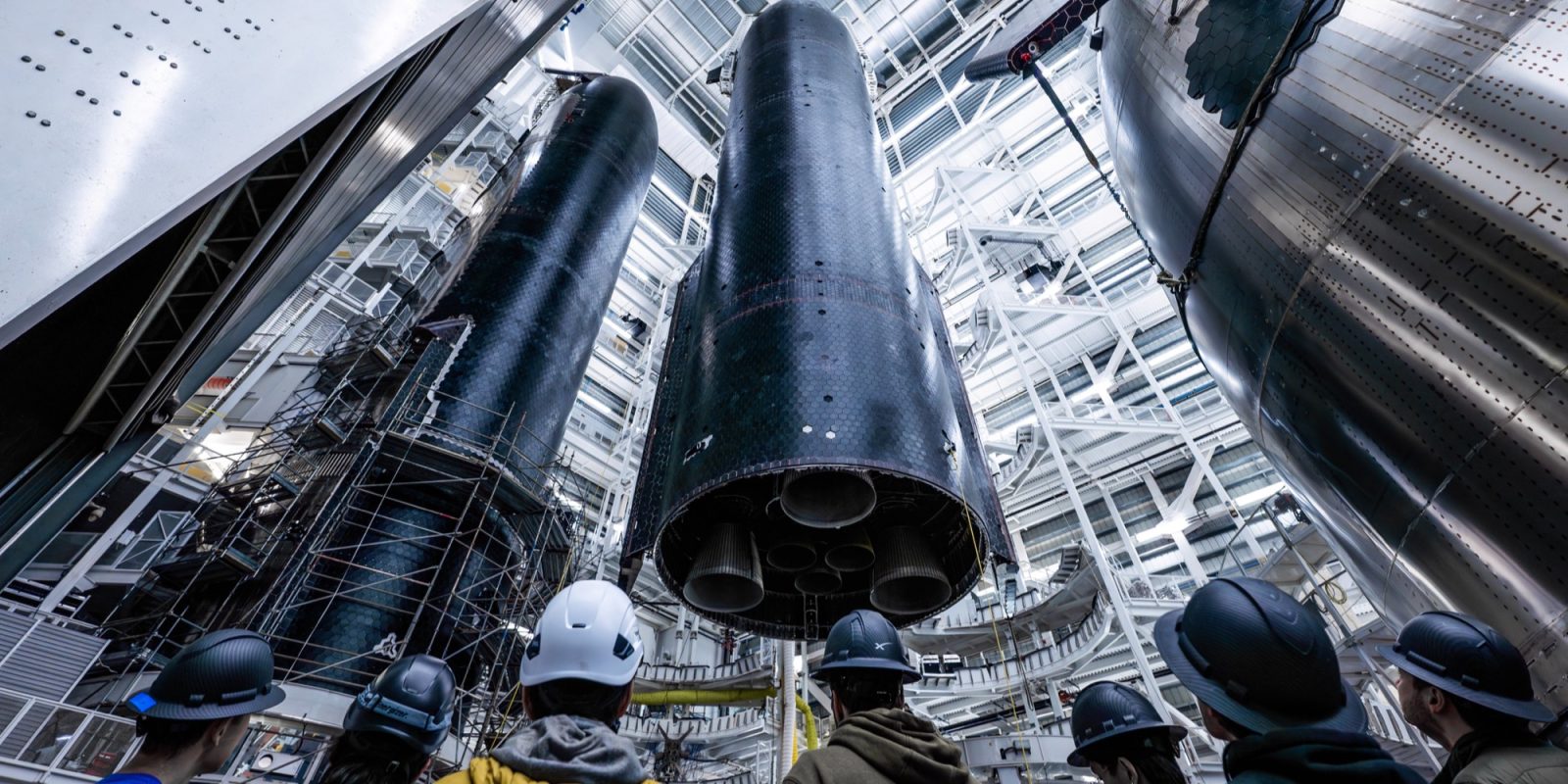
So far, each Starship flight has been first and foremost a test flight. Starship Flight 7 will be no different. SpaceX has a list of new hardware and changes to the vehicle and launch mount that will need to be tested during next week’s launch. Here’s a list of ten changes SpaceX has made for Starship Flight 7.
1. Upgraded tower radar system
During Flight 6, sensors were damaged during liftoff, which resulted in the abort of the catch attempt of the booster. SpaceX shared that for Flight 7, they have made changes to both physically protect important components and increase accuracy. If you were paying attention to Starbase watchers, then you might remember some test antennas on Pad A’s catch arms. SpaceX confirmed that those were likely tests of added radar sensors that will better guide boosters and soon ships back to land.
Flight 7’s booster has strict guidelines its flight computer must follow before committing to a catch attempt. Both the booster and the tower must have nominal systems for a catch to take place, and either system can call for an abort. One way to prevent issues for future catches is beefing up protection around critical components of the launch pad.
SpaceX also has a human in the loop who can call for an abort if they see something the computers don’t.
2. Ship catch points
One of SpaceX’s many goals for Starship in 2025 is to attempt a catch of the Starship upper stage, also known as the “ship.” The company has already proven it can catch the booster and complete a soft splashdown of the ship out at sea. Flight 7’s Ship 33 received non-structural catch pins on its side. This is to test the new pieces of hardware during reentry to see if they survive reentry or change the aerodynamic profile at all.
Elon Musk has stated that a ship catch is just a few flights away, possibly on Flight 8 or 9. SpaceX has been able to hit accurate splashdowns in the Indian Ocean during the last few flights and reduce the amount of damage to the ship during reentry. So maybe we are just a few weeks or months away from a catch.
3. Upgraded avionics
Ship 33 differs from previous Starship upper stages as it is of the Block 2 variant. Like with all block upgrades, there are usually a whole host of changes that SpaceX has learned from building the Block 1 version so many times.
One of the areas is the avionics, gaining a more powerful flight computer and backup communications, all paired with the capability of Starlink. We’ve been treated to some of the most jaw-dropping footage during streams thanks to Starship’s connectivity through Starlink. The vehicle has 30 cameras on it; with its 120 Mbps of streaming capability, the views will only get better.
4. New forward flap design
Another Block 2 change is the forward flaps. Reduced in size and moved rearward, the new design shifts the flaps out of some of the more intense heating during reentry, reducing the need for added protection for sensitive components.
This overall reduces weight for the upper stage, increasing available mass to orbit, and reducing complexity, all while still allowing Starship to control its descent.
5. Improved propellent system
Sticking with Block 2 changes, Starship has an improved propellant system. SpaceX mostly stated that it made changes to the rocket’s feed lines to the engines, which overall increase performance.
The Block 2 ship also has stretched fuel tanks, allowing it to operate longer in space. This reduces the payload space available, but SpaceX plans to remedy this in the future Block 3 vehicle.
6. Improved heat shielding
The final Block 2 change is to the ship’s heat shielding. This has been one of the harder components to get right on Starship, especially around the vehicle’s flaps. However, changes have made the heat shield more effective.
Block 2’s heat shield features new-generation tiles that are stronger and less prone to cracking and falling off during flight. However, if a tile does break and fall off, a new ablative material is beneath the tiles and will serve as a final barrier before any burn-through takes place.
7. Active cooled heat shield tiles
SpaceX is also working on new ways to improve Starship. While there is a new heat shield, that doesn’t mean SpaceX won’t change it again in the future. Several spots on Flight 7’s Ship 33 have test tiles on them to see how they fare compared to the ceramic tiles currently in use.
First are metal tiles, which are cheaper and easier to produce than the ceramic ones; this is not the first time we’ve seen these test tiles show up. More interesting is the addition of actively cooled tiles. SpaceX didn’t go into too many details with these, but we assume this means tiles that are being cooled using some sort of liquid or gas rather than absorbing the heat like ceramic.
Musk originally discussed having the entire heat shield of Starship actively cooled using the vehicle’s propellants. While the change was made for simplicity, the work might not be over to achieve this goal.
8. Starlink dummy satellites
One of the most exciting additions to Starship Flight 7 will be the addition of ten dummy Starlink satellites. SpaceX intends to deploy these pathfinders while in space to test out the current satellite deployment system. These “satellites” will follow Starship’s suborbital flight path, so they too will splash down in the Indian Ocean or burn up along the way.
Currently, Starship doesn’t have a proper payload deployment mechanism that could be used for any payloads that would be interested in flying in its cargo bay. The current system is mostly tailored to the next-generation Starlink satellites SpaceX is developing. Likely being called Starlink V3, these flat satellites only need a small door to be pushed out of for their deployment system.
However, eventually, a proper large opening will need to be added to Starship in order for larger and non-flat-designed satellites to take advantage of Starship’s capabilities.
9. First reflown Raptor engine
Most of these changes have been for the ship, but the booster will see some flight testing as well. The Super Heavy booster is the same Block 1 variant that flew on previous flights, so no significant structural changes are being made.
Instead, SpaceX is doing its first bit of Starship reuse, a single Raptor engine that flew on Flight 5 will make its second appearance on Flight 7. This is just the beginning for Starship’s reusability goals, as SpaceX plans for rapid reusability of full Starship boosters and ships in the future.
10. Stressing ship reentry profile
Finally, SpaceX will be putting that new heat shield and flap designs to work during reentry. The company stated that the entry profile will be more stressing to push the flaps to their limits. In the last few flights, SpaceX has been able to demonstrate it can control a Starship through the atmosphere and complete a soft landing at sea, so now it seems time to find its breaking points and uncover any weaknesses.
Starship Flight 7 will be another Starship mission packed full of new technology. Like all missions before it, the goal is still to gain in-flight data as SpaceX continues to develop the system. Although by the end of 2025, I would expect to see Starship firmly out of development and ushered into operational use, at least for SpaceX.
FTC: We use income earning auto affiliate links. More.




Comments